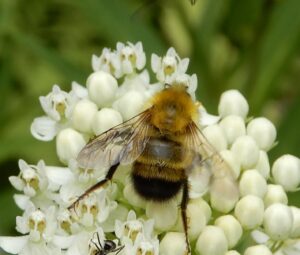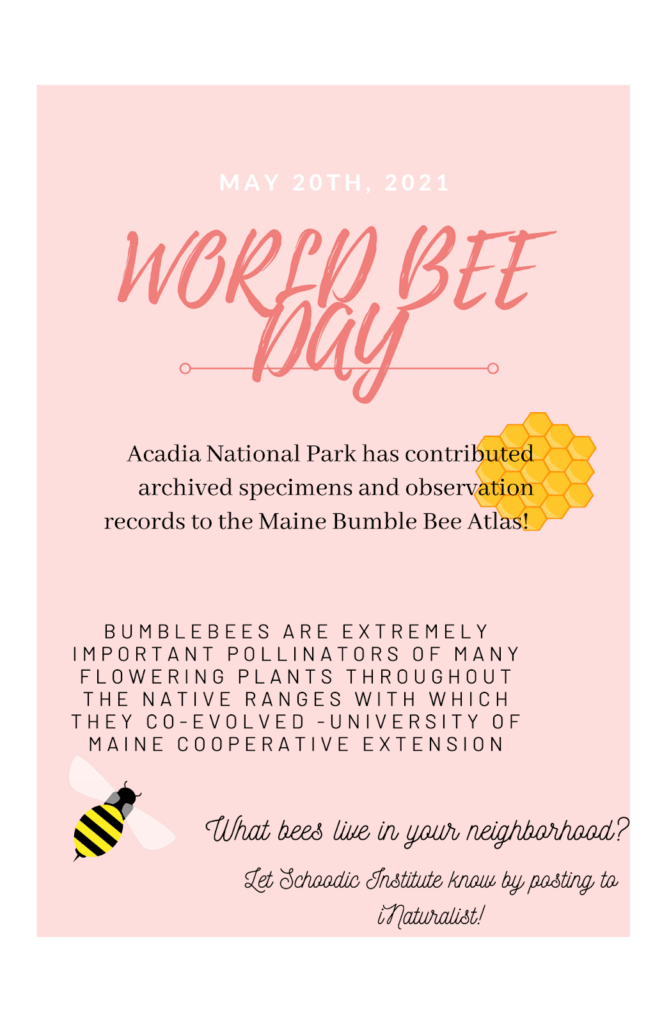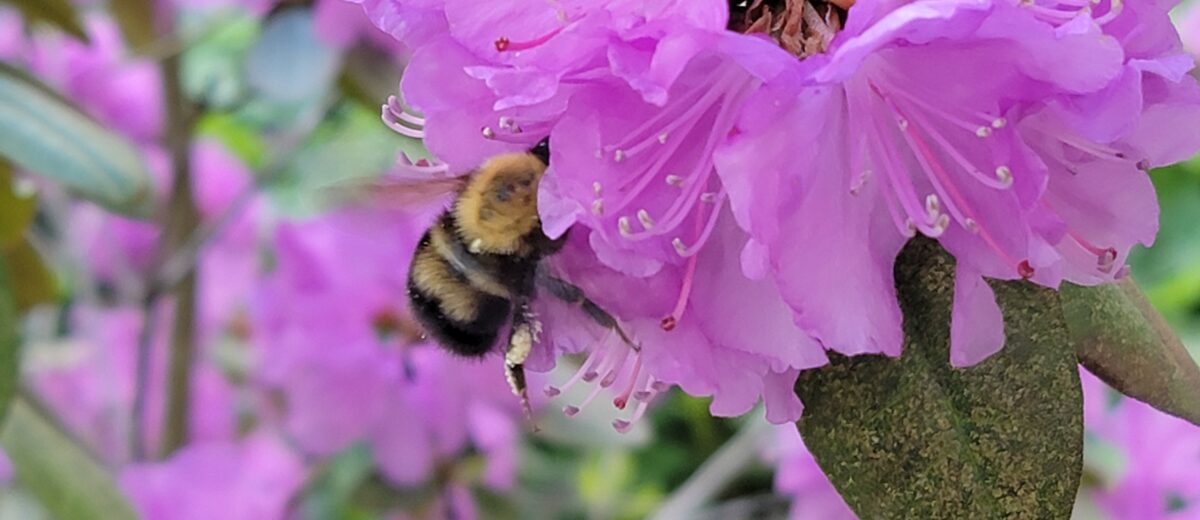by Catherine Schmitt
On May 18, 1927, William Procter encountered a bumble bee, trapped and preserved it, and added the specimen to his growing collection of Mount Desert Island insects. He would go on to collect eleven more of the species, Bombus perplexus, also known as confusing or perplexing bumble bee, because it is easily confused with other bumble bees. It is distinguished by its very fuzzy appearance, almost shaggy with its abundant yellow hairs.
Procter described Bombus perplexus as common; there are six recent iNaturalist records of the species in Acadia, although it hasn’t been documented in Acadia since 2019.

This year on World Bee Day, May 20, why not look for bees in Acadia, or wherever you happen to be?
According to the Xerces Society, bees are the most important group of pollinators. “With the exception of a few species of wasps, only bees deliberately gather pollen to bring back to their nests for their offspring. Bees also exhibit a behavior called flower constancy, meaning that they repeatedly visit one particular plant species on any given foraging trip.”
Unlike the social bumble bees, most bee species are solitary. Many of the bees documented by Procter are solitary nomad or cuckoo bees, which lay their eggs in the nests of other bees. They let the other bees do the work of collecting pollen (protein-rich food for the young), and visit flowers only to drink nectar, and therefore are not strong pollinators.
As part of the Landscape of Change project, we are hoping people will join us in trying to re-locate bee species in the places where they were found in the early twentieth century (see list below), and document findings using iNaturalist.
Look for the confusing bumble bee now on blooming azalea, blueberries, and apples. Other bumble bees — tricolored, two-spotted, and the common eastern bumble bee — have already been seen in Acadia this year. The nomad bees are smaller, but worth looking for. Any and all records are valuable. And if you want to be more involved and receive updates on the Landscape of Change project, sign up here.

